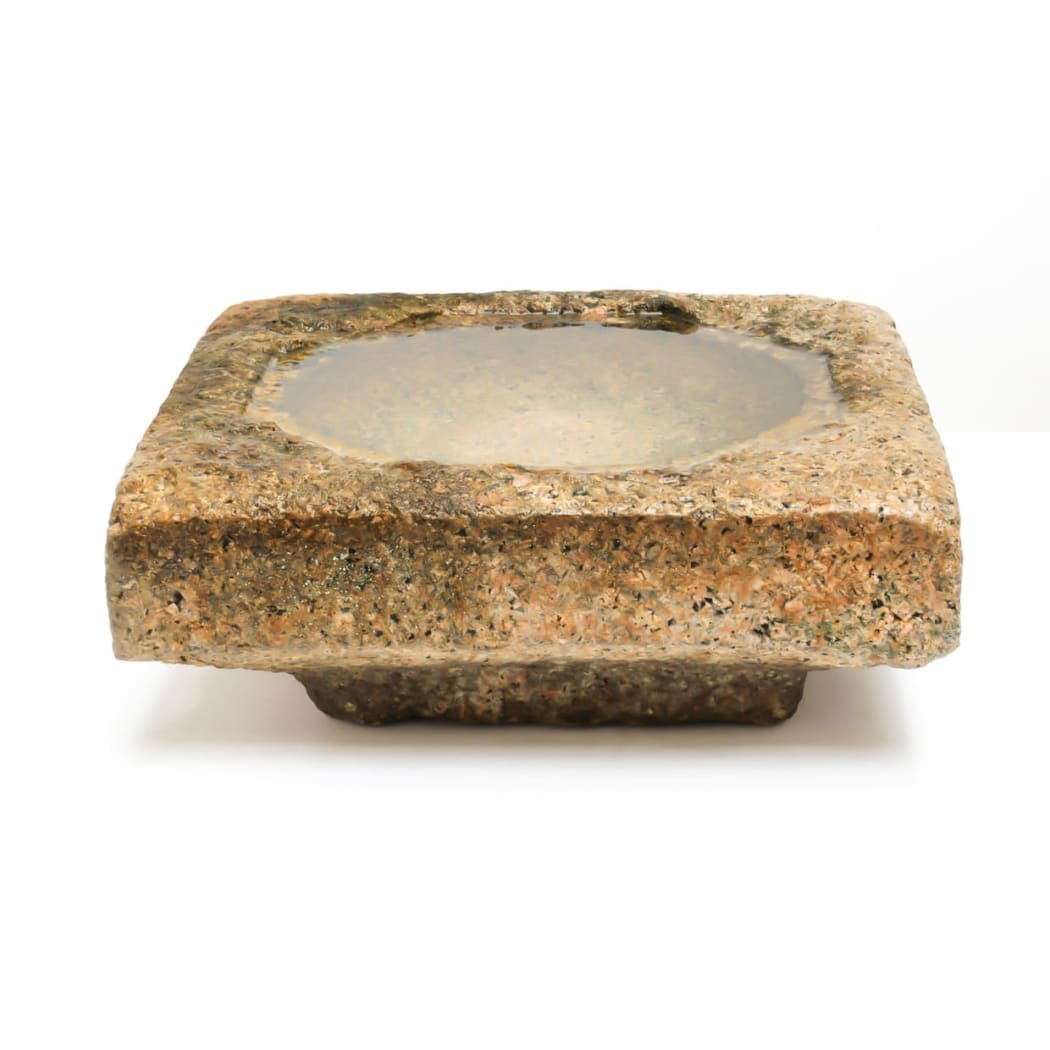
The exact history of basins in Japan is not clear. The oldest dated basin exists in the Joruri-ji temple in Kyoto, with an engraving from 1269. However, the tradition of cleaning one’s hands in a basin before entering a temple has existed for much longer.
In the beginning of their creation, basins were carved for temples and shrines. Over time, their structure was adopted into the secular world, in parallel with the adoption of stone lanterns into lay gardens. In this world, the style of basins developed into two types: basins in the garden of a tearoom, and basins in the gardens of traditional Shoinzukuri architecture.
As the Way of Tea spread in the Edo Period (1603-1868), basins developed into an integral facet of tea events. They were called Tsukubai, which sat along the pathway through a tea garden. These basins served a practical hygienic purpose, allowing guests to wash their hands before entering to a tearoom. Yet, they came to be of ritual importance as well.
While the beautifully pruned garden pathway to a teahouse created a space to transition away from the outside world, basins allowed one to literally and symbolically wash their hands of that world. Both of these tea rituals allowed guests to release their mundane everyday associations and enter into a new state of sensory acuteness.
The other kind of basin, Chozubachi, existed in the gardens of private residences. Slightly larger and taller than Tsukubai, they were made as complements to the traditional Shoinzukuri architectural style and its gardens. Consider the relative oddness of this act in Western culture; to place a sink in the garden of Versailles, for example, would seem quite odd. Yet, in Japan, it is necessary to place a basin in one’s garden. Not only must a basin to exist in these gardens; it must also be absolutely beautiful.
Zen monks will travel to a waterfall and stand underneath it in the middle of winter, sometimes for hours. They train in this way to become stronger physically as well as mentally, seeking purity on the ultimate level. While theirs is the most extreme articulation, it demonstrates the deeper spiritual drives of Japanese culture.
Japanese Basins crafted with the ultimate aesthetic refinement treat the simple act of cleaning with pious grace. As result, they have blossomed into a spectacular art form.

